| Name | Sheets Irrigating Vectus |
| Lead Time | Lead time advised within 48 hours of order placement. |
| Competitor | ;OP0903351;OP0903-351;601257;60-1257;E0615;6012-57; |
| Specialty | Ophthalmology-Cannulas |
| Material Finish | Stainless Steel |
| Grade | Premium Operating Room |
| Units of Measurement | Each |
| Manufacturer | Tool Tectra |
| Sterility | Non-Sterile |
| Usage | Reusable |
Sheets Irrigating Vectus
ports at 3, 9, & 12 o’clock w/ serrations on top of 6.0 mm x 10.0 mm loop, 21-gauge Sheets Irrigating Vectus is a useful tool for cataract and lens extraction procedures. The loop is instated between the nucleus and the posterior capsule; fluid is allowed to pass into this space to allow for easier removal of the lens. Three irrigation ports provide ample fluid distribution, while serrations on the loop allow for sure grip of lens tissue.
SKU:
TT-SI-1926
Category: Cannulas
Description
Reviews (0)
Be the first to review “Sheets Irrigating Vectus” Cancel reply
Shipping & Delivery
Related products
Knolle Anterior Chamber Irrigating Cannula
SKU:
TT-SI-1655
irrigating ports at 12, 10 & 2 o'clock, 23-gauge, overall length tip to hub 1-1/2" (3.8 cm) Knolle Anterior Chamber Cannula is a frequently used tool in cataract extraction procedures. The small gauge cannula with angled tip is nimble enough to fit into a small limbal incision accessing the anterior chamber. It may be used to aspirate fluid within the anterior chamber exposing the lens capsule.
Kratz Capsule Scraper
SKU:
TT-SI-1267
shaft w/ sharp top, shaft angled 60 degrees, 12.0 mm tip from angle to tip, 22-gauge, 1/2" Kratz Capusle Scraper is a useful tool in phacoemulsification procedures. The sandblasted tip is designed to scrape the surface of the posterior capsule to remove and cellular debris following aspiration of the nucleus.
Bishop Harmon Anterior Chamber Irrigator
SKU:
TT-SI-2883
Bishop Harmon Anterior Chamber Irrigator is a frequently used tool in cataract IOL implantation procedures. Following nucleus fragmentation, the irrigator may be used to aspirate any remaining debris from the anterior chamber. The complete set features and adaptor, irrigating cannula, and silicone bulb.
McIntyre Anterior Chamber Cannula
SKU:
TT-SI-3822
McIntyre Anterior Chamber Cannula is a frequently used tool in cataract IOL implantation procedures. Following nucleus fragmentation, the cannula may be used to aspirate any remaining debris from the anterior chamber. Both angled and straight tips are available in three different gauges depending on surgical preference.
Lieppman Cystotome
SKU:
TT-SI-8322
w/ guard, 22-gauge, 2" (5.0 cm)Lieppman Cystotome is a commonly used tool during cataract phacoemulsification procedures. The cystotome may be used to create a circular incision in the anterior capsule before proceeding with aspiration of the lens. The tool features a guard to prevent extraneous damage to the surrounding iris or globe tissue.
Bracken Anterior Chamber Cannula
SKU:
TT-SI-5219
curved, 19-gauge, overall length excluding hub 13/16" (2.1 cm) Bracken Anterior Chamber Cannula is a frequently used tool in cataract extraction procedures. The small gauge cannula is nimble enough to fit into a small limbal incision accessing the anterior chamber. It may be used to aspirate fluid within the anterior chamber exposing the lens capsule. The curved nature of the shaft assures minimal surgical obstruction.
Knolle-Pearce Irrigating Lens Loop
SKU:
TT-SI-3639
1.0 mm tip, angled 30 degrees, sandblasted, 23-gauge, 3/4" (2.0 cm)Knolle-Pearce Irrigating Lens Loop is a useful tool for cataract and lens extraction procedures. The loop is instated between the nucleus and the posterior capsule; fluid is allowed to pass into this space to allow for easier removal of the lens. Three irrigation ports provide ample fluid distribution.
Maumenee Vitreous Aspirating Needle
SKU:
TT-SI-2185
blunt tip w/ markings, 5.0 mm, 10.0 mm & 15.0 mm, 18-gauge Maumenee Vitreous Aspirating Needle is a commonly used tool in retinal ophthalmologic procedures. The needle features a large gauge designed for the aspiration of the viscous vitreous fluid following retinal detachment or increased pressure. In addition, markings on the gauge aid the physician in navigation of the tool.

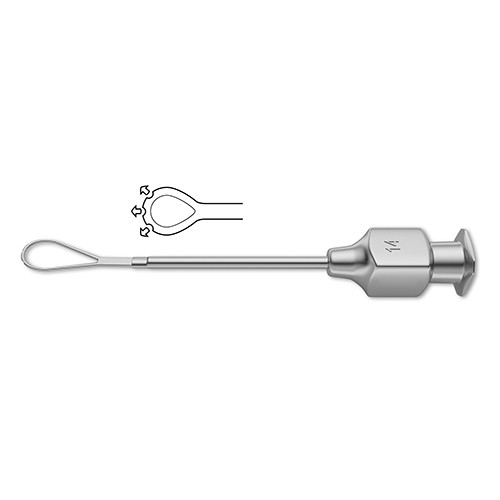

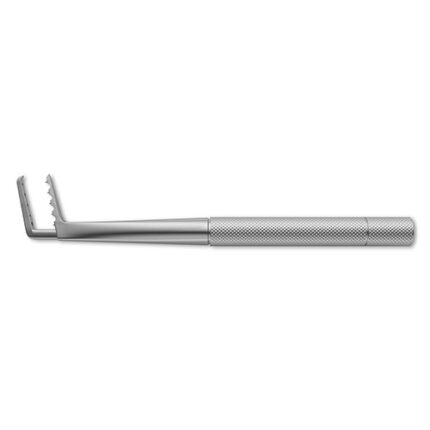


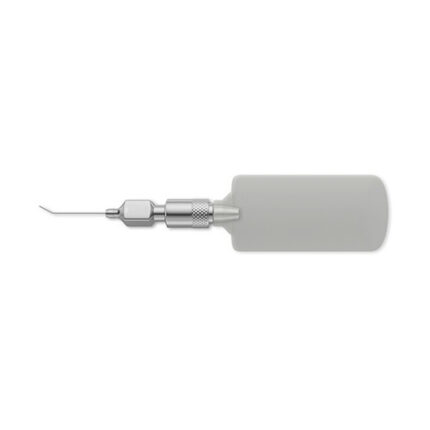
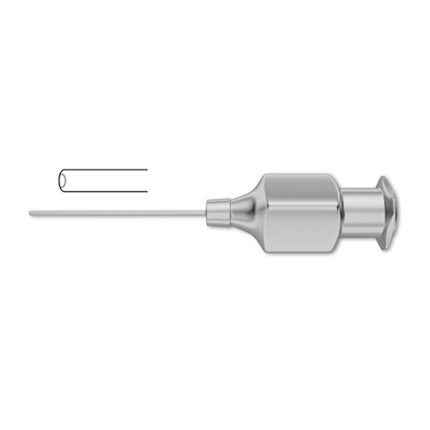

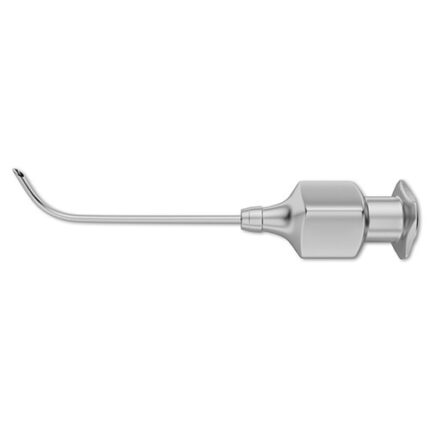
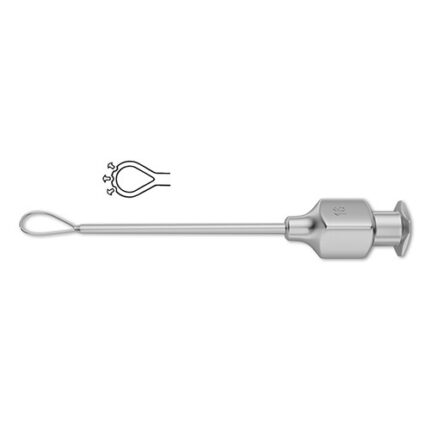

Reviews
There are no reviews yet.